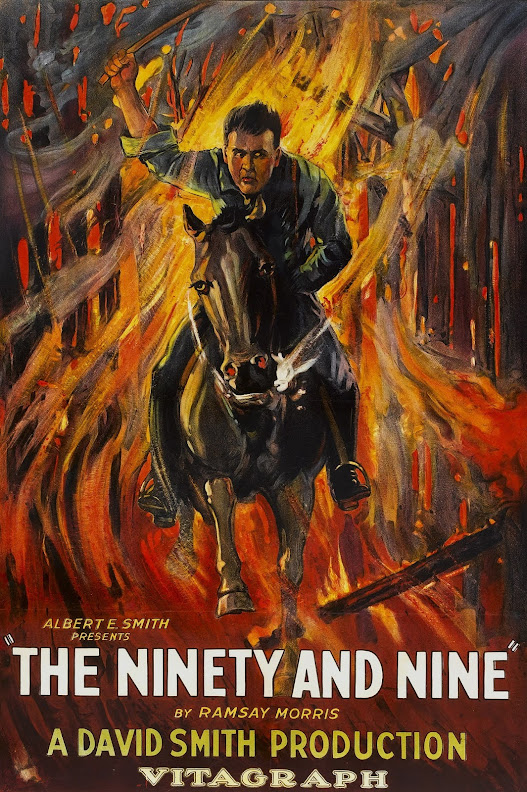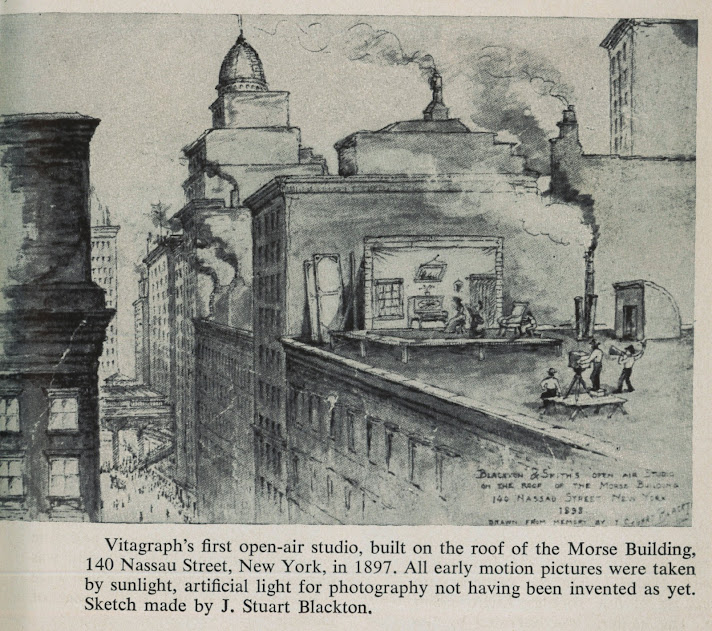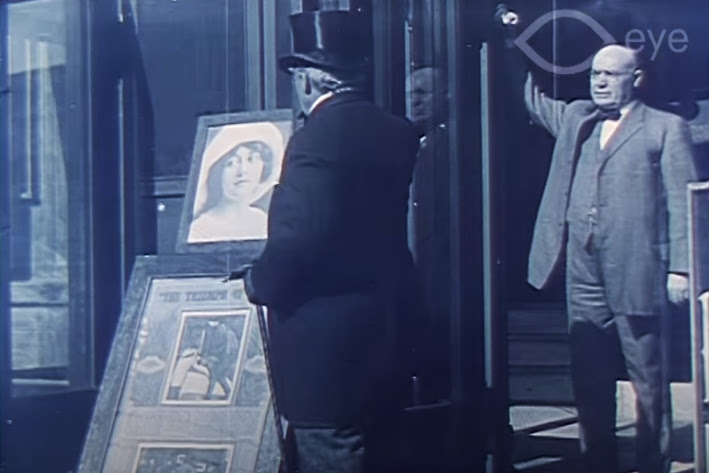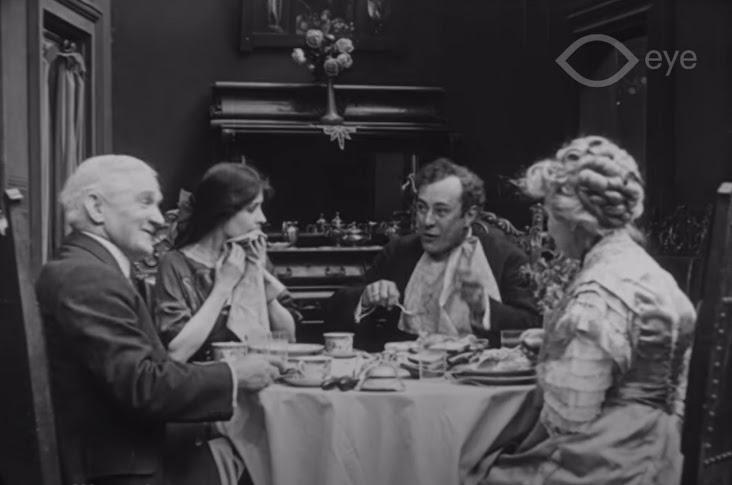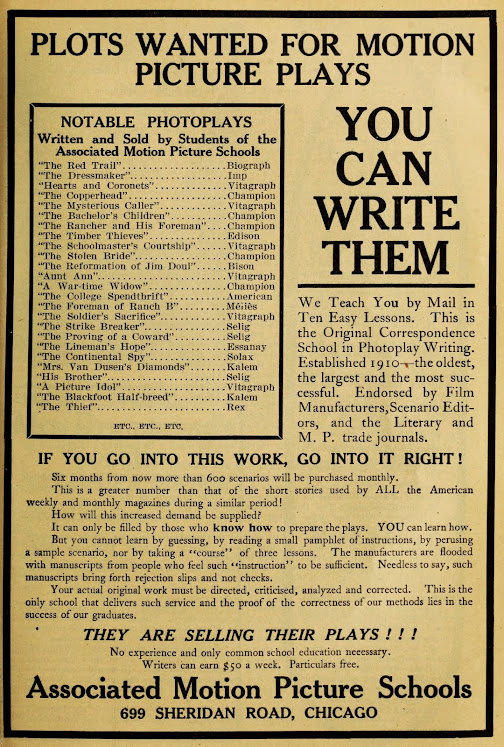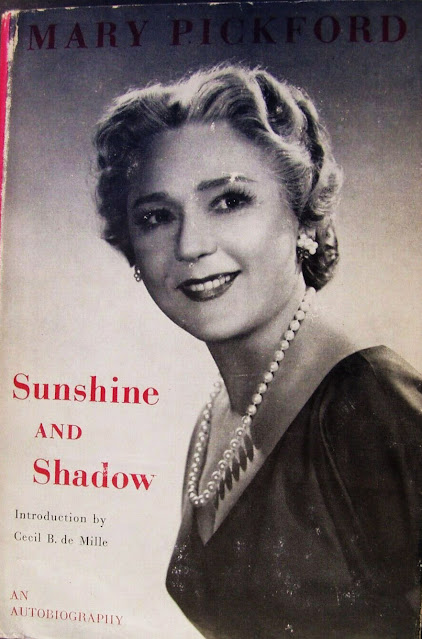Trek Through Ad-Man Jungle
 |
| Director Jack Conway Poses With The Star Cast |
The Hucksters (1947) Gives Radio a Close Shave
Whatever its merit for drama or romance, The Hucksters opens a door to workaday 1947 among advertising agents, radio folk, and Hollywood reps. Diluted from harder-hitting Frederic Wakeman novel, anyone then or now knew an industry under Code edict had to hide Easter eggs where it could. To attack ad agencies would be seen by some as an assault upon America itself, a drilling into capitalist foundations, sale of goods widely viewed as a way back from war and highest hope for reclaim of normalcy. New forming families had lots to consume, advertisers a needed guide toward that. Plus people were fascinated by in-outs of salesmanship, an occupation almost as glamorous as being in movies. The Hucksters too had been a “hot” novel. Would they dare adapt it as written? Everyone knew not, but there was fun in imagining.
 |
| Conway Reviews the Script with Gable and Deborah Kerr |
Clark Gable could not (some say would not) play a heel and adulterer as Wakeman-penned. Again --- unreasonable to expect he would. This was Gable back from service and staying true to his uniform, image never so critical as now. There is first-reel reminder of maleness --- hugs with old ladies who want but can't have him (Connie Gilchrist), and kootchy phone chat with last night's date. All this was required but not in sync with a war-wearied Gable who should be up to more serious pursuit. We’re to understand his descent into ad-manning goes against Gable grain, a best of The Hucksters being his fight for integrity amidst a corrupt trade. Gable had been there and done this, Wife vs. Secretary of 1936 differing because in that instance, it was his ad agency, one that would reflect standards we expect of go-getting, but always fair play “Clark Gable.” Here he is tied to salaries and bonuses, other men as boss, an untenable state for the lone achiever we want Gable to be. Expectation for stars, particularly ones returned from real-life struggle as was his (bombing missions) meant formula had to be righter applied than ever, missteps a risk as many of these personalities, having lost three-four years off career momentum, had fragile paths to walk.
The Hucksters wasn't appreciated in 1947 for things that make it fascinating now. As document, if sanitized, of what went on in post-war agency corridors, it is peerless. Deals close on the Super Chief in club cars a public then took for granted. Such settings are for us like Disneyland, a romantic mode of travel long gone. Night clubs and penthouse apartments are dwelt in as if we'd always have them. People wear more attractive clothes than what hangs off us now, a given in 40's-set film. Gable is another of eternal optimists who will use his last dollar to buy a tie, and yes, this was believable in 1947 thanks to plentiful jobs for men who merchandised, Madison Avenue’s a solid grip over decades to come. The Hucksters takes off on radio, surprising in view of MGM history of bedding with wireless. Programs and especially ads we hear are inane to a point of nausea, Gable’s reaction when hearing them a mirror for anyone with passable sense. He does everything but a Babe Hardy camera-look to show disgust with what listeners presumably coped with every night at home. Was this Metro bid for us to shut off radio and get back into theatre seats where quality was a given? Could be, but critics were carping that movies had slipped since before the war. Coming dips in boxoffice revenue would seem to bear them out. Intriguing too is no Hucksters mention of television, popularly around the corner by mere months. The industry knew, had known, the looming threat this posed, a threat perhaps better ignored.
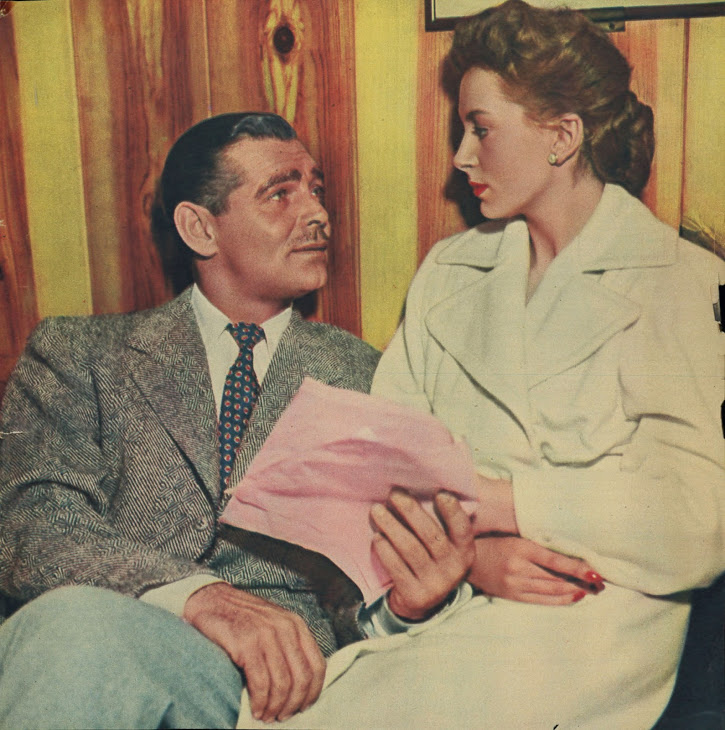 |
| Publicity Stills Were Often Done in Gable's Private Dressing Room, As Here and In Several Below |
Inside-advertising is ripest fruit of The Hucksters. When Gable adjourns to romance Deborah Kerr or Ava Gardner, pace falters but bad. Who'd have thought his love stuff would become so tiring, yet here it was. Kerr was a Brit import, having done better things over there, The Hucksters a splash intro worth the trip and submission to Metro handling that made her a seeming younger sister to Greer Garson, latter soon to fade (Kerr, Rhymes With Star!, said publicists). Like Garson, Kerr was uneasy fit for Gable, to whom Ava Gardner acquitted better. Kerr was called "prissy" beside the King, and yes, she seems so. There is quarreling, and much eaten footage, over his apparent booking of connected rooms at an inn they visit. She is morally outraged on behalf of Code precepts any Gable character would have laughed at (or ignored) in freewheel days past, the issue a non-issue as audiences were increasingly aware. Alert eyes saw industry decline a Hucksters forecast via such a dated and unwelcome device. It is boardrooms where the film lights up, known un-trustworthies Adolphe Menjou and Edward Arnold lending spice to watered soup. These two had been double-dealing long enough for us to at least hope they will do so here, and if that doesn't altogether jell, their presence is comfort at least. Gable and Menjou were friends, Menjou’s later memoir, It Took Nine Tailors, boasting an intro by Gable. They are relaxed and congenial in scenes played opposite one another.
 |
| Back Caption Says Gable is Gifting Gardner With a Tin of Candy. Wonder What Flavor. |
 |
| Greenstreet and Conway Prep For a Next Scene |
Nasties retained from Wakeman's book are embodied in Sydney Greenstreet's despotic sponsor boss. From an intro where he spits on a table top, there is no question of cast seniority. The Hucksters needs Greenstreet for the rest of participants draining its swamp with PCA-forced decency. He's in for three or so segments, all of them key. When Greenstreet enters, it is like Gorgo loose on London, him destructive to the cast, but a gift to viewers. Business of developing a comedy skein for radio looks authentic, Gable's ad man and last minute hired writers punching out a pilot script in a smoke-filled cabana. Was radio so lousy as presented here? MGM said it was "all in fun," but what's depicted is done with stilettos, a seeming chuck of whatever relationship they had with broadcasters for the sake of putting it to them now, but this came of the source novel, they'd argue, so if radio-knocks were blunted, why make The Hucksters at all? A novel that sold this well was going to be adapted for pictures, sure as snow. If Metro did not do it with The Hucksters, someone else would, best-sellers understood to be a closest thing to a sure thing studios had left. Lines where drawn were generally over cost or otherwise onerous terms. Gable wanted very much for MGM to acquire The Fountainhead for him. They didn’t, and he stewed (the more so when career-long rival Gary Cooper got the lead at Warners).
 |
| The Hucksters Settled Into a Long Chicago Run |
For a picture that skewered advertising, The Hucksters held many a cross-promotional hand. There was "no limit," said merchandisers, to tie-in with every product imaginable. The mid-forties was a peak of pic mention in ads for candies, whiskey, fountain pens, any product to profit from push. Stars weren't shy to endorse these, as every back was scratched and product endorsement was nice adjunct to what studios paid (if employers took the fees, at least players could have a fresh set of tires or lifetime cartons of Chesterfield). Concrete proof of strides Madison Avenue made would reflect in marketing for The Hucksters. Wakeman's novel got a reprint --- it had topped Best Seller lists for half a year and was still "whispered about" in book club circles. The movie was a hit, even against inflated cost of postwar producing. So too did Adventure thrive, Gable's first out of uniform. His tumble as claimed by writers was a matter of degree of gain for employers, not absence of it. Of those Gable-done at Metro after WWII, only Command Decision (very expensive to make) and Never Let Me Go lost money.














